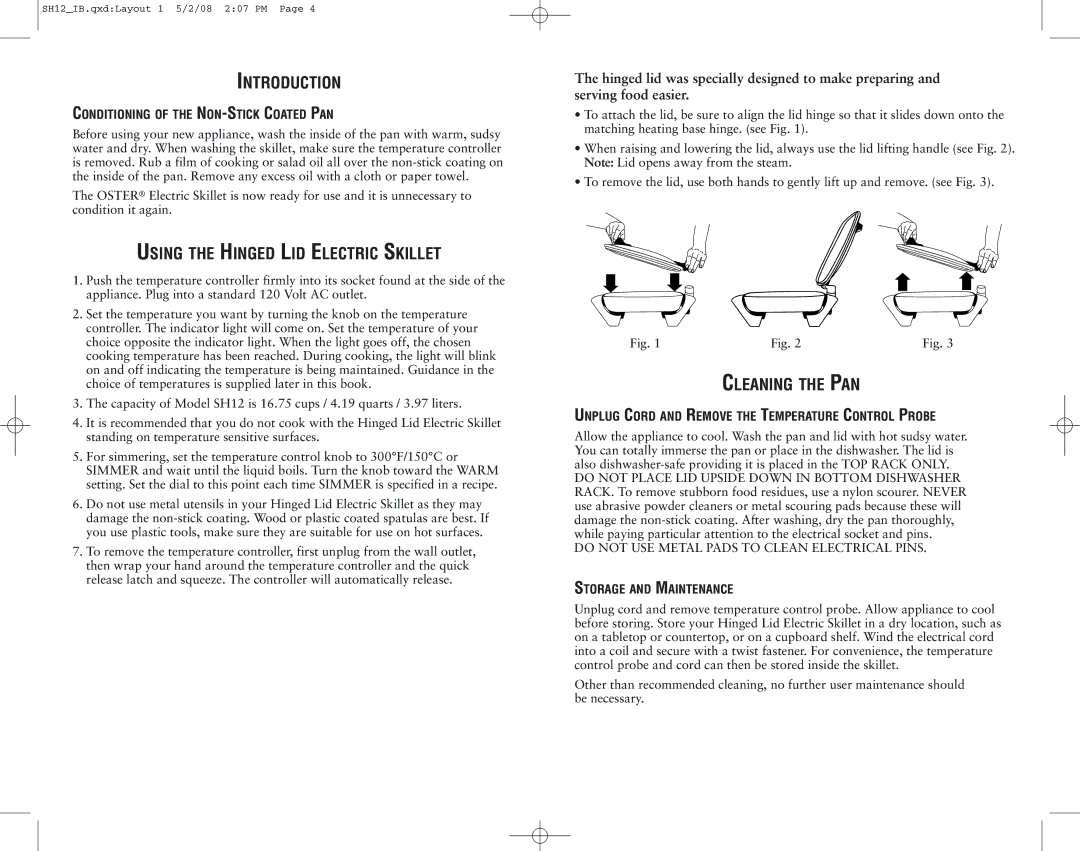126954, SH12 specifications
The Oster SH12,126954 is a standout product in the realm of kitchen appliances, particularly known for its exceptional blending capabilities. This versatile blender comes equipped with an array of features designed to make meal preparation more efficient and enjoyable.One of the main features of the Oster SH12 is its powerful motor, typically boasting around 600 watts of blending power. This strength allows users to effortlessly crush ice, blend smoothies, puree soups, and create dips with ease. The motor is designed to handle a variety of ingredients, which makes it suitable for both soft fruits and tougher vegetables, ensuring a smooth, consistent blend every time.
The blending container of the Oster SH12 is made from durable glass, which not only provides a classic aesthetic but also allows users to see the blending process in action. The glass jar is designed to withstand high temperatures, making it safe for blending hot soups and sauces. Its generous capacity usually holds around 6 cups, accommodating family-sized portions and larger recipes with convenience.
Another key feature of the Oster SH12 is its intuitive control system. The blender typically comes with multiple speed settings, allowing users to adjust the blending intensity to suit various recipes. The pulse feature is particularly handy for when more control over the blending process is needed, enabling users to achieve their desired texture consistently.
Incorporating advanced technology, the Oster SH12 utilizes a stainless steel blade system, which is known for its durability and sharpness. This technology ensures efficient blending and eliminates the risk of dull blades, which can often hinder performance over time. Additionally, its ability to handle both frozen and fresh ingredients makes it an incredibly versatile tool in the kitchen.
Moreover, the Oster SH12 is designed with ease of cleaning in mind. Many components, including the glass jar and lid, are dishwasher safe, allowing for hassle-free cleanup after a culinary session. Safety features, such as a secure lid and non-slip feet, further enhance its usability, making it a reliable choice for kitchens of all skill levels.
In conclusion, the Oster SH12,126954 is an exceptional blender that combines power, versatility, and ease of use. With its robust motor, durable glass jar, advanced blade technology, and thoughtful features, it stands as a valuable addition to any kitchen, empowering home cooks to experiment and create a wide array of delicious dishes.

